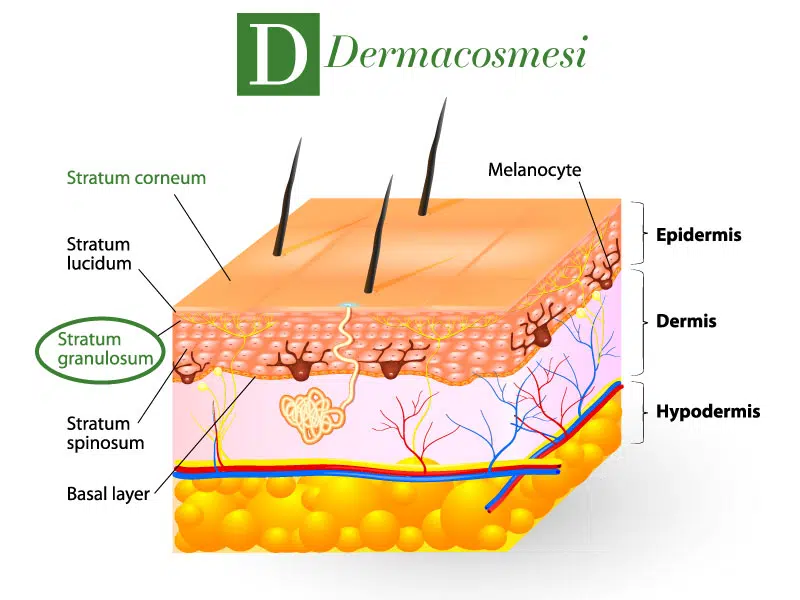The Stratum Granulosum is part of the 5 main layers of the epidermis.
It is located below the Stratum Lucidum and has flattened cells typical of the upper, stratum lucidum.
These, when they still have a nucleus, are pushed upwards by the reproductive activity of the lower layers.
Contents
Stratum Granulosum of the skin: so called because of the keratinocytes
The term granulosum derives from the composition of the Stratum Granulosum itself: in it, there are tapered, slightly flattened keratinocytes containing keratohyalin granules and keratinosomes.
What keratinocytes contain: keratohyalin and keratinosomes
As we said before, the Stratum Granulosum of our skin is composed of keratinocytes that contain:
- Keratohyalin
- Keratinosomes.
Let us discover together the components of keratinocytes that give rise to the Stratum Granulosum of our skin.
Keratohyalin: a mixture of different elements in our skin
Keratohyalin represents a mixture of various substances among which we have: profilaggrin, a protein that is dephosphorylated into filaggrin.
Filaggrin is a fundamental mechanical support for the assembly of keratin filaments.
Keratinosomes: they create the intercellular ‘cement’ of our skin
Keratinosomes contribute to the formation of intercellular cement by releasing their lamellae.
The cells of the Stratum Granulosum of the skin produce proteins: involucrin and loricrin
The cells of the Stratum Granulosum of the skin produce other proteins such as involucrin and loricrin, which are deposited at the level of the membrane, forming a resistant part.
In the Stratum Granulosum of the dermis, lamellar bodies are present
In the Stratum Granulosum of the dermis, there are membrane-bound lamellar bodies made up of lipids in lamellar layers arranged one on top of the other. These bodies are called Odland bodies.
Odland bodies of the skin: what they are for
The membrane present in the Odland bodies fuses with the membranes of the other cells, the lipids present are released by exocytosis to form an intercorneocyte cement consisting of fatty acids, cholesterol and ceramides.
The Stratum Granulosum of the skin is fundamental to the structure of the epidermis
The Stratum Granulosum is fundamental as it gives strength to the structure of the epidermis.
